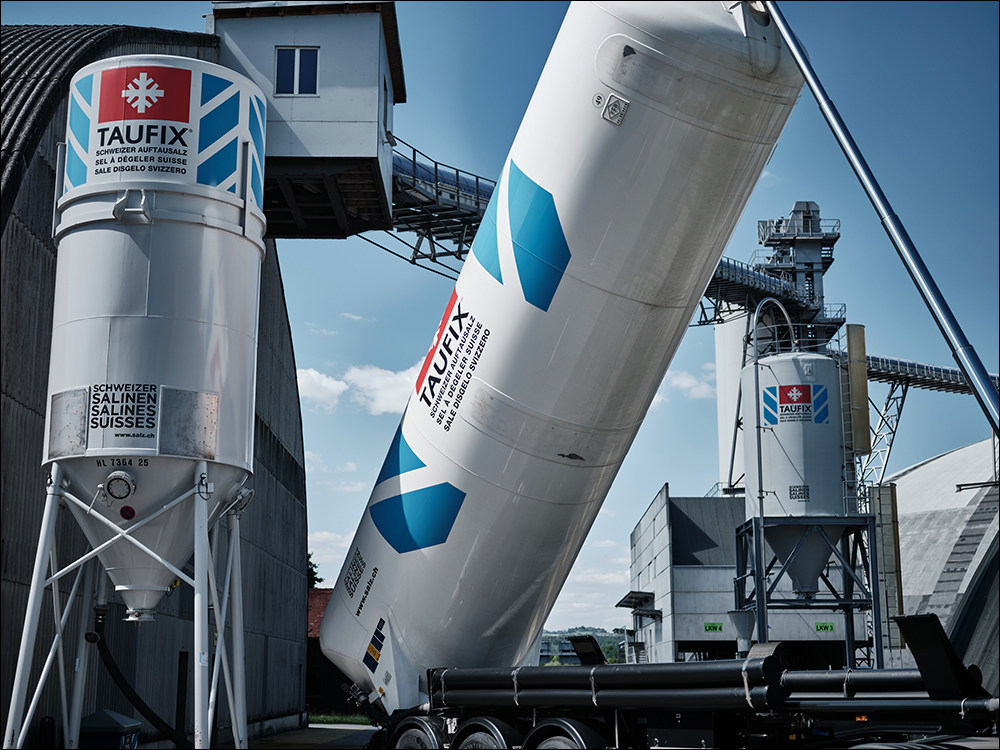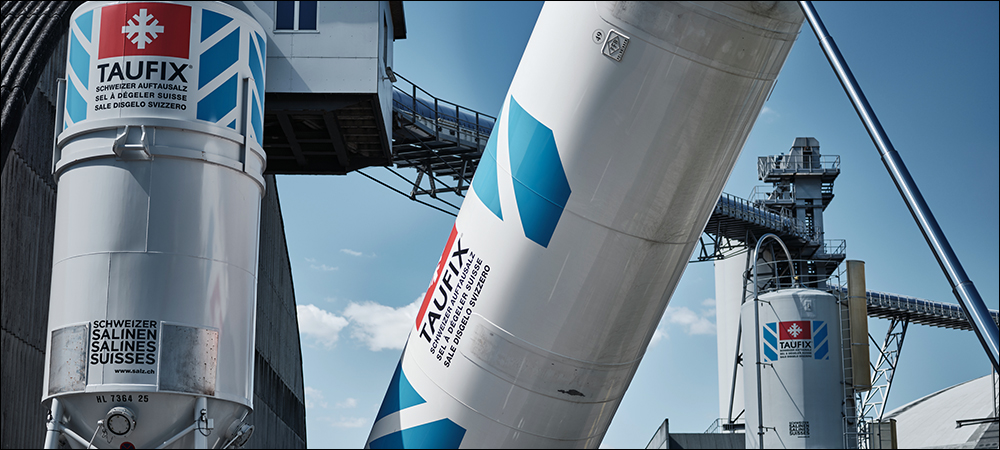Following a winter season of snow and ice, as well as the distribution of salt to keep roads clear, Swiss Saltworks has completed its piloting of an Internet of Things (IoT)-based system to monitor salt supplies within its mobile silos. The company has been testing a solution from uBlox, with a device designed by Comtac, on 20 siloes. The wireless technology provides real-time data regarding the status of its salt supplies and the conditions at each site, ensuring roads and streets around each silo can be treated during and after storm events.
The weather in Switzerland, as well as the consumption of salt to keep roads clear, can vary widely from day to day, or even hour to hour. The goal is thus to ensure salt is always available. The solution uses a custom-designed device with built-in sensors and LTE cellular transmission, with data captured and managed on Swiss Saltworks’ software platform. The system was built to bring visibility to conditions around siloes that are distributed throughout the mountainous country of Switzerland. By capturing data regarding salt levels and other conditions, the company knows when refilling or maintenance is needed at any given site.

The company has piloted an IoT system to monitor salt supplies within its mobile silos.
Temperatures, GPS locations, orientation and other types of data are wirelessly fed back to Swiss Saltworks’ corporate office, enabling the firm to better plan its salt distribution across the country. Comtac designed the devices, which are built into the solution provided by uBlox with the latter’s Thingstream communication-as-a-service platform connectivity over a cellular LTE network, according to Stefan Zimmerman, Comtac’s CEO. Following the trial, Swiss Saltworks intends to introduce the solution nationwide to more than 200 silos, beginning this summer.
Swiss Saltworks provides commodity salt throughout Switzerland. That production amounts to approximately 600,000 tonnes (661,400 tons) of salt produced at mine sites in Schweizerhalle, Riburg and Bex. The 450-year-old company offers salt for consumption, as well as for industrial purposes. Among its products, the firm manages more than 7,000 tonnes (7,716 tons) of de-icing salt that is used daily around the country during the winter season. Swiss Saltworks has declined to comment for this story.
Comtac, Zimmerman explains, is a design house for customer-specific electronics. The company develops hardware and software for products that include IoT sensor-based systems. Comtac met with uBlox and Swiss Saltworks prior to the 2021–2022 winter season to design a system that would manage salt inventory. The quantity of salt required for road clearing and de-icing is unpredictable by its nature, and road crews and cities are at the mercy of the weather if a snow or ice event takes place.

Stefan Zimmerman
It is crucial, however, that there be enough salt available to ensure the roads are safe to drive. During a warm winter, the challenges are minimal, while a stormy week can change that dynamic very quickly. The Alps create another challenge since mountainous regions can face severe winter weather, and delivering salt to that area is not as straightforward as it may be in others. Due to high ridges, weather events can be highly localized, meaning one community might need considerably more salt than another.
With all the variables that come with this challenge, Swiss Saltworks needed a way to monitor the salt levels at each site on a regular basis. If a tank’s salt levels drop below a minimal level, the company can refill the tank with trucks that use salt pumps, but knowing when that might be necessary can prove to be challenging. If a city or public works department finds that the amount of salt is growing low, or if a silo is empty, they can call Swiss Saltworks to schedule a delivery. This system can fall short if that refill delivery is not made as quickly as the salt is used, and the manual method can be inefficient and prone to errors.
To address these problems, Zimmerman says, the pilot was launched in October 2021 at 20 pre-selected sites. Each location consists of a mobile storage silo, about 8 meters (26.2 feet) high when standing upright, that holds the salt. It is delivered by truck and is temporarily installed at a central location for each community throughout the winter months. Once the risk of ice and snow has passed, the tanks are removed, cleaned and serviced for the following season.
The challenge for IoT technology is to ensure that a sensor device can reliably capture data about what is taking place within the tank, and to transmit that data from remote locations for a long period of time. That means the sensor must have a long battery life, as well as be rugged enough to survive the harsh conditions in and around the silo. To date, Zimmerman says, the devices have had a battery life of around three years.
The sensor transmits a radar signal directly into the tank and measures the response. In this way, it can detect the level of salt. The radio device is cabled to the sensor on top of the tank, and it transmits data to the server. The unit can also capture the presence of moisture, which could indicate the silo requires maintenance. It can identify where the silo is located, in order to link that mobile storage tank with a specific location. Another built-in sensor can determine whether the unit is standing up or on its side, which could indicate it is in transport.
According to Zimmerman, the solution was specially designed to ensure that the device could be easily accessible in the event that it requires maintenance, while the transmitter is mounted outside the tank to achieve the best reception. The configuration enables easy access to the technology for battery replacement, as well as maintenance checks from the ground level. Data is transmitted at preset intervals, which could be as little as once a week when salt is not being withdrawn, or more often. Once transmitted, the information is forwarded to Swiss Saltworks’ enterprise resource planning software, and the system can issue alerts to authorized parties to schedule a refill for a specific site and silo.
The data provides historical value as well, Zimmerman notes, since the company can view salt usage over time, according to each community, and thus understand average requirements. “That information can help future scheduling plans,” he explains, “by helping them be more proactive with filling the silo.” This summer, Swiss Saltworks intends to roll out the technology to all 250 sites. So far, the LTE coverage has proven to be reliable at all the sites where the technology was piloted. “We have good radio coverage in Switzerland,” he states. The technology could also work with LoRaWAN or other cellular-based systems.


